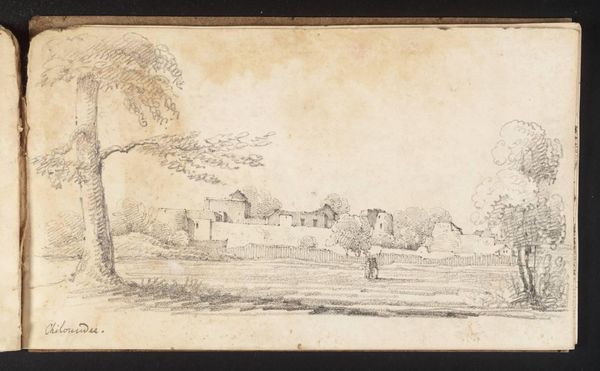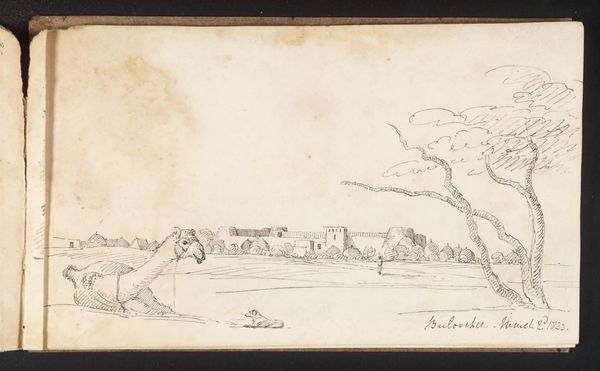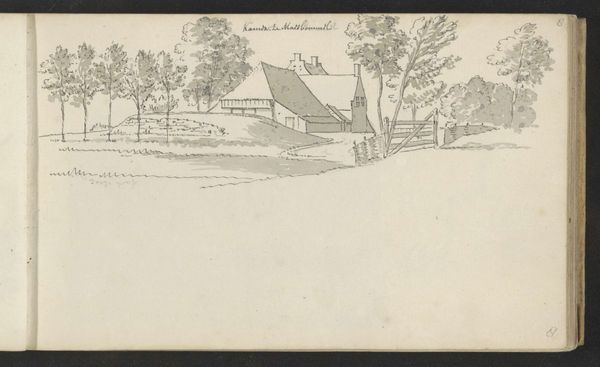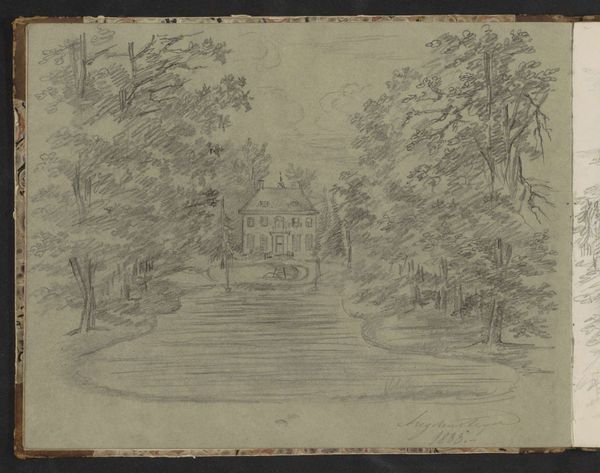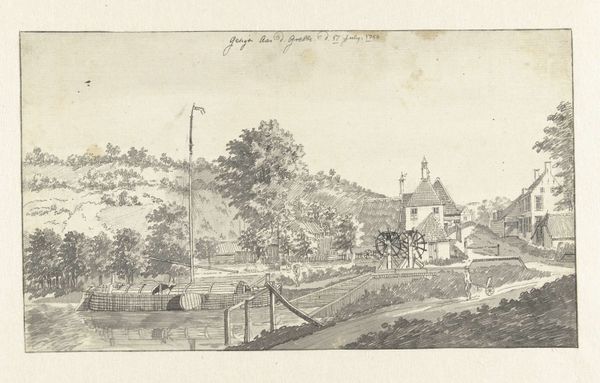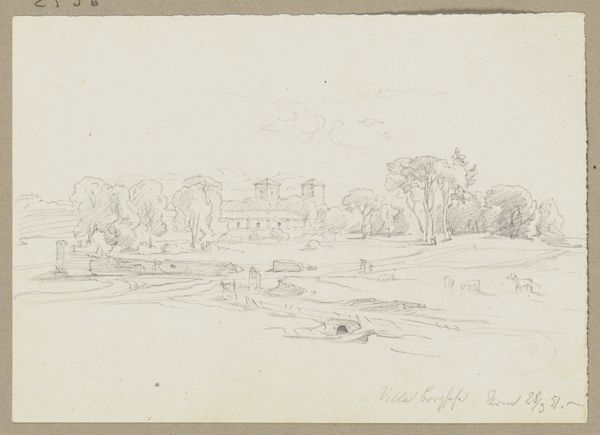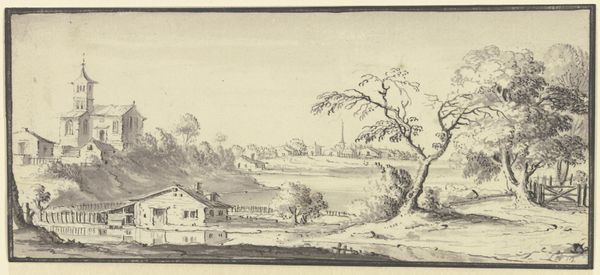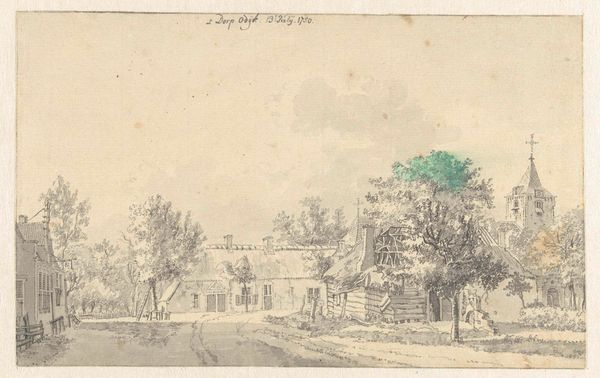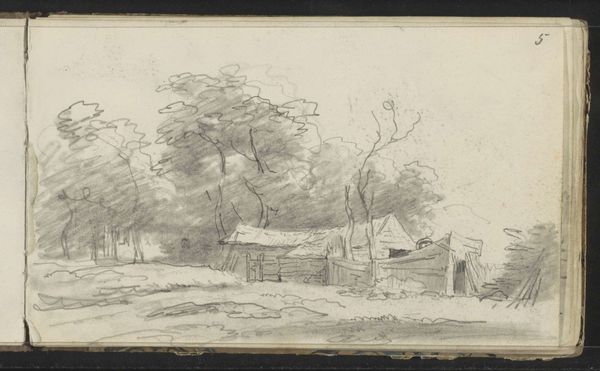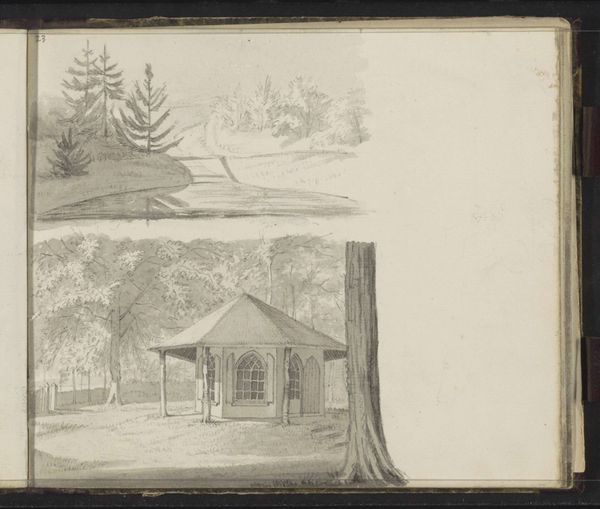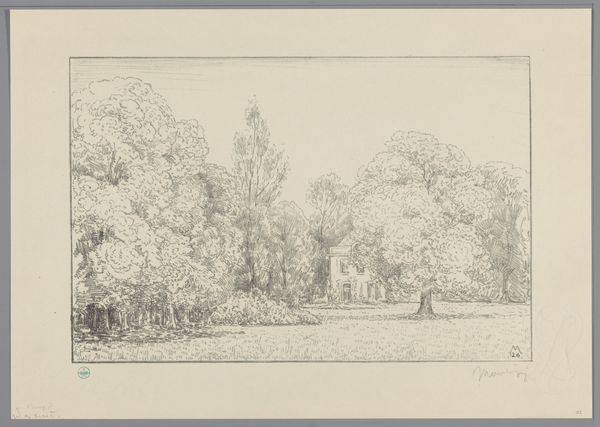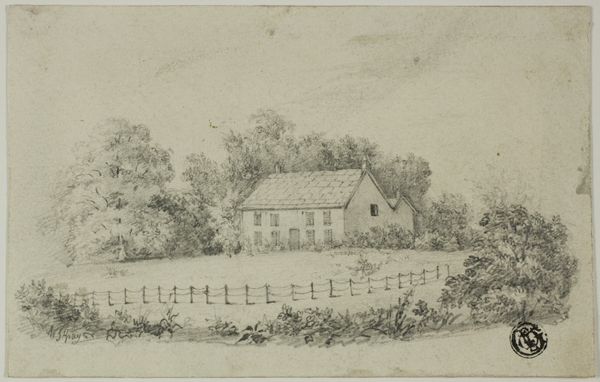
drawing, paper, pencil
#
drawing
#
sketch book
#
landscape
#
paper
#
romanticism
#
pencil
#
park
#
realism
Copyright: Rijks Museum: Open Domain
Curator: This is Johannes Tavenraat’s "Huis Rhederoord," a pencil drawing on paper from 1833, currently residing here at the Rijksmuseum. Editor: The first thing that strikes me is the sense of tranquility. The soft pencil strokes create an ethereal atmosphere. It almost feels like a dreamscape. Curator: That dreamy quality is definitely tied to Romanticism, a movement deeply entwined with depictions of landscapes like this. But I’m more interested in how Tavenraat's rendering invites us to question access to these spaces and for whom they provided idyllic settings. Editor: Ah, interesting. I see how you read the landscape through the lens of social critique. From an iconographic perspective, the house itself acts as a symbol. Buildings often represent stability, order, but even privilege depending on who inhabits it. Curator: Exactly! This wasn't just a picturesque scene, it represented social power. Who had the leisure to enjoy this 'natural' setting? We have to ask what these curated landscapes mask. This house is perched atop the hill, suggesting the elevation and insulation from certain community life. Editor: Yes, and that physical elevation is visually echoed. Notice how the path guides our eye inexorably towards the house. The house embodies ideas of attainment or aspiration. Curator: Right, and thinking about the Romantic era in the Netherlands, it's vital to see the artwork as possibly representing the prevailing colonial narrative and legacy for people who identify as native and indigenous groups. How does seeing that type of landscape change when that social aspect is brought into it? Editor: That contextualization makes it more unsettling. It shifts the weight of the symbolism considerably. It becomes less about peaceful domesticity and more about visible, constructed power dynamics. The trees are still soft, but there is a hard line from our viewing point to the structure itself. Curator: So it shows a simple sketch becoming an object deeply connected to broader political issues. We are invited to engage in social commentary. Editor: Absolutely. That single drawing manages to contain so much within its deceptively delicate lines. Curator: Bringing this contextual element makes such a tremendous change and reminds me how potent these visuals can still be in society. Editor: I concur. By recognizing its iconography and its place, that artwork reveals multiple, and still visible today, realities and social contexts.
Comments
No comments
Be the first to comment and join the conversation on the ultimate creative platform.
